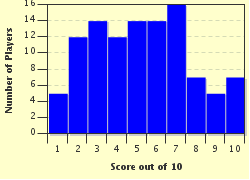Quiz Answer Key and Fun Facts
1. One of the more famous events of the Russian Revolution was the execution of the Tsar Nicholas II, his wife Alexandra and their children on the 17th July 1918. But Alexandra is in fact a Russian name she took upon her marriage. What is her real name?
2. The Bolsheviks were known as the Red Army, but what is less known is there were several other armies in the Revolution and subsequent Civil War that were also named after colours.
Which of these was NOT one of them?
3. "Battleship Potemkin" has been called one of the most influential films of all time (despite the fact that it includes propaganda). It focuses on a mutiny that occurred when the crew of the Russian battleship Potemkin mutinied against their officers of the Tsarist regime. In what year did this actual event occur?
4. In 1917 there were actually two Russian revolutions, followed by a civil war. The first revolution was the one that unseated the Romanov dynasty and the second revolution was the Bolshevik coup.
The two separate revolutions are named after which two months of the year?
5. Vladimir Lenin triumphantly came into Petrograd just before midnight on 16 April 1917 from which European city?
6. In the October Revolution the Bolsheviks overthrew the government to form their own. Who was the Prime Minister overthrown?
7. What year saw the end of the Russian Civil War and the establishment of the Soviet Union?
8. Stalin was born in which region of the Soviet Union?
9. What would have been the name of the Tsar to have succeeded Nicholas II after he abdicated himself and his son from the throne?
10. In 1991 St Petersburg got its name after Soviet-era place names were renamed. Which of these names were they NOT formerly known as?
Source: Author
mrjeremy
This quiz was reviewed by FunTrivia editor
bloomsby before going online.
Any errors found in FunTrivia content are routinely corrected through our feedback system.
